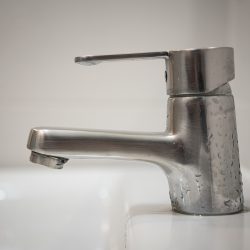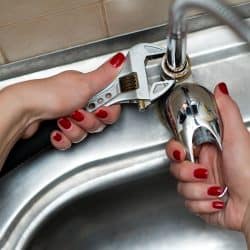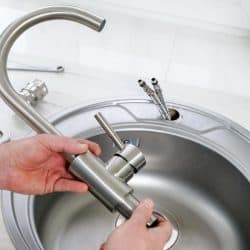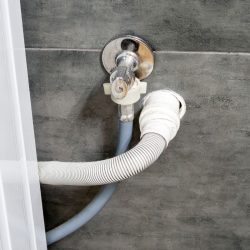Purchasing the right faucet makes all the difference in your day-to-day chores. Homeowners might be curious to learn if kitchen faucets come with hoses, or if they have to purchase them separately. We consulted experts on this and they gave us the answer that you can find right here.
Kitchen faucets often come with hoses for both cold and hot water. The only downside is that the hoses might not be as long as you need them to be. Sometimes, you might get hoses that have threads you don't need.
These two issues can be rectified by purchasing other hoses that fit properly. Homeowners might find this disappointing since it leads to unnecessary extra costs. Continue reading to find out if the hoses with your kitchen faucets are ideal and how to avoid problems if they're not
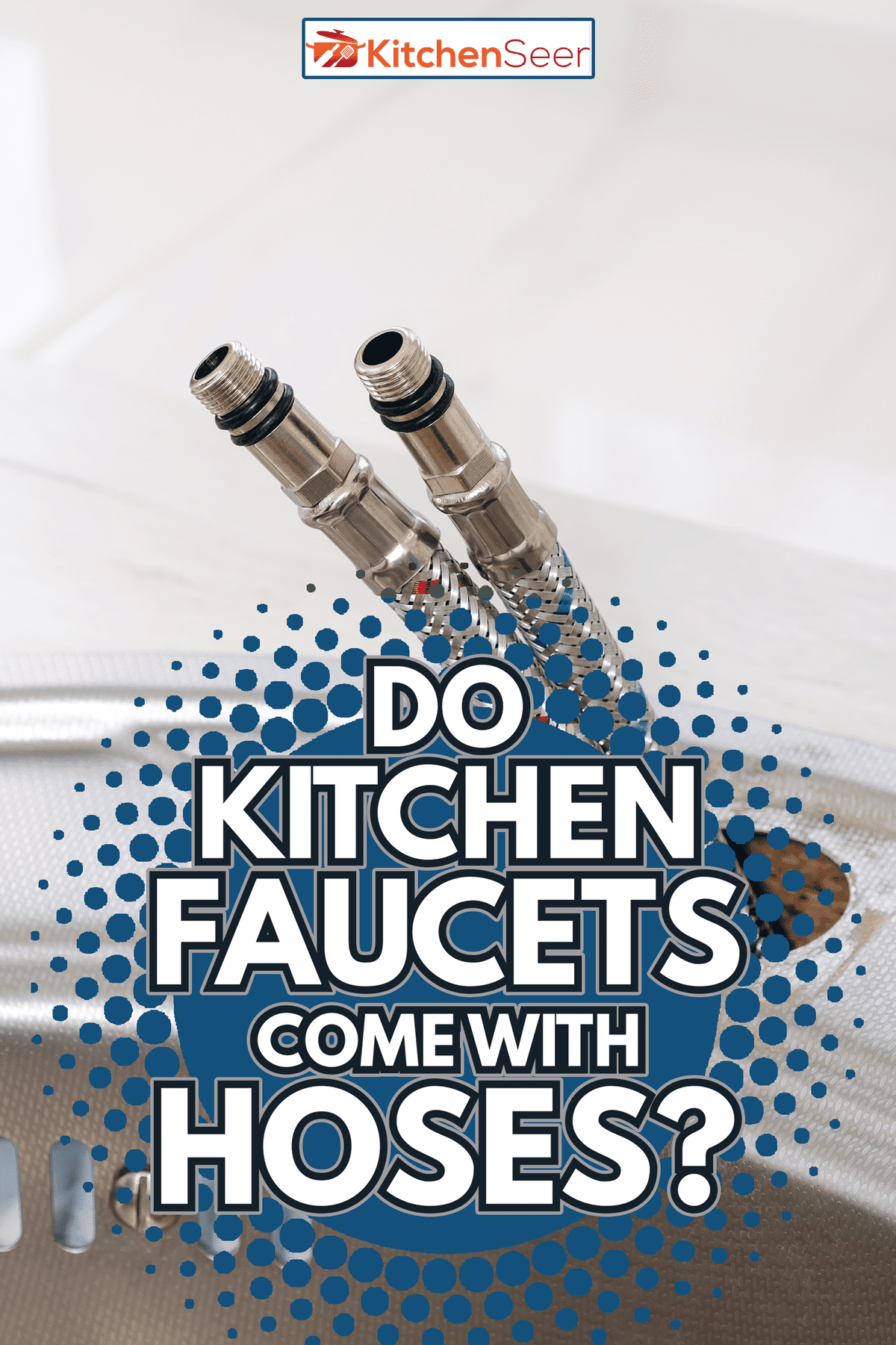
Parts Of A Kitchen Faucet
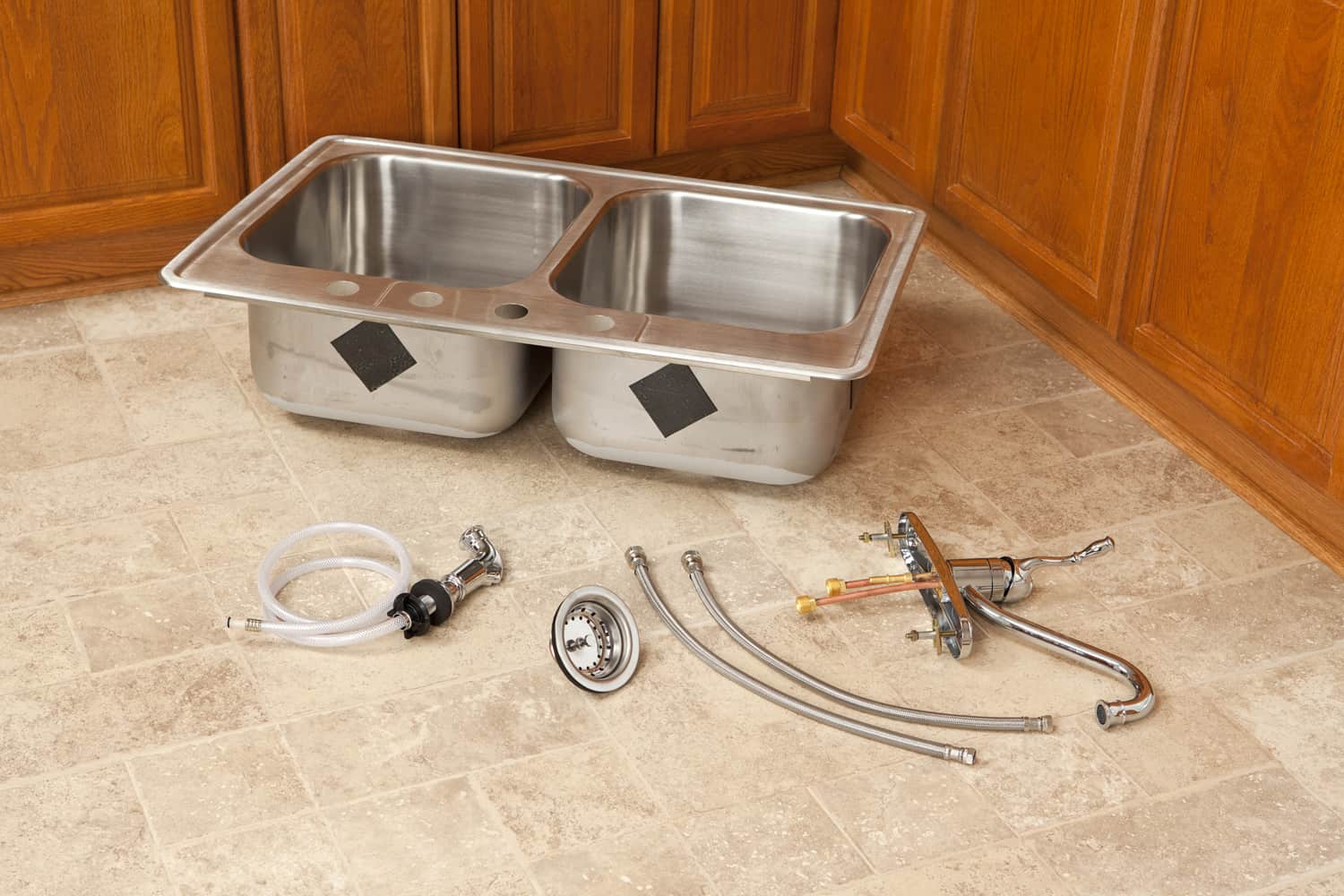
There are several kitchen faucet manufacturers, and they have many different packaging components for the kitchen faucets they sell. It’s a good idea to learn what parts comprise your kitchen faucet, even though you might never have to buy these components separately.
Before we discuss this any further, you should understand that kitchen faucets differ in style, size, and finish. The style of the kitchen faucet may feature some extra components.
Primarily, your faucet should help deliver water to your sink from the plumbing system. The basic components of your kitchen faucet should be:
Water Spout
This is the major component of your kitchen faucet. It can be curved or straight, long or short.
Gaskets
These are simply rubber, plastic, or metal seals that hold two parts of the faucet together. Gaskets won't allow water that's under pressure to seep through the two connected parts.
Here's a gasket set on Amazon.
Hoses (sometimes optional)
They connect the faucet to the water valves. The hoses come in several lengths, but you’ll find them all in 1/2-inch diameter. The supply pipes are always two 1/2-inch male pipe threads for hot and cold water supply.
Check out these hoses on Amazon.
These hoses are manufactured in different sizes, ranging from 12, 16, 20, to 30 inches long. Experts advise buying a supply hose with an inch to spare to be on the safe side.
Take note that hoses for pull-down kitchen faucets come with the specific pulldown faucet. But you can find replacements in home improvement stores for the specific model you have.
Washers
Kitchen faucets come with their washers. As such, it isn't necessary to purchase them separately.
Aerators
These non-flashing faucet regulators are fixed at the tip of the faucet. They help the water to get out of the faucet with a mixture of air. Aerators can be bought separately for repair purposes.
Have a look at this aerator on Amazon.
Controls
There are three most popular types of controls for kitchen faucets. They are disc, ball, and cartridge controls that are washerless. This means the controls don't have neoprene washers. The compression control is the least popular type of control, but the oldest. The compression controls use washers.
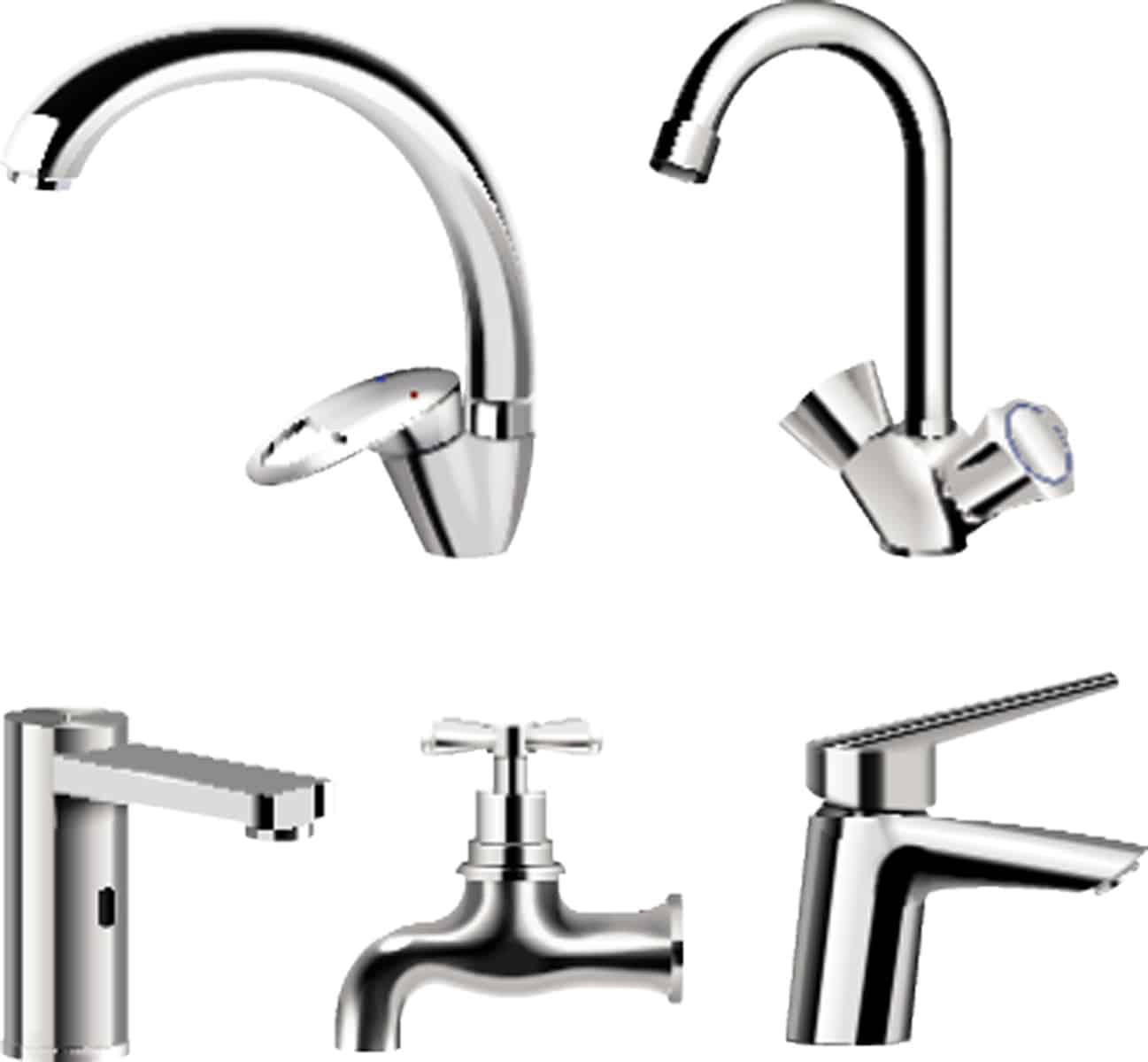
Screws (different sizes)
In the kitchen faucet set you'll purchase, different size screws are included to fit the particular kitchen faucet.
Flanges
These are metal discs at the bottom of the sink.
Soap dispenser
Some modern kitchen faucet sets have a soap dispenser included. Of course, a faucet set with this feature will cost more.
How To Replace A Kitchen Faucet
You can simply change the kitchen faucet to refresh your kitchen. Replacing kitchen faucets is relatively easy, so even inexperienced DIYers can do it.
You should ensure that you have the right kitchen faucet for your kitchen before you proceed with the installation. You can easily find a manual with instructions for the new kitchen faucet.
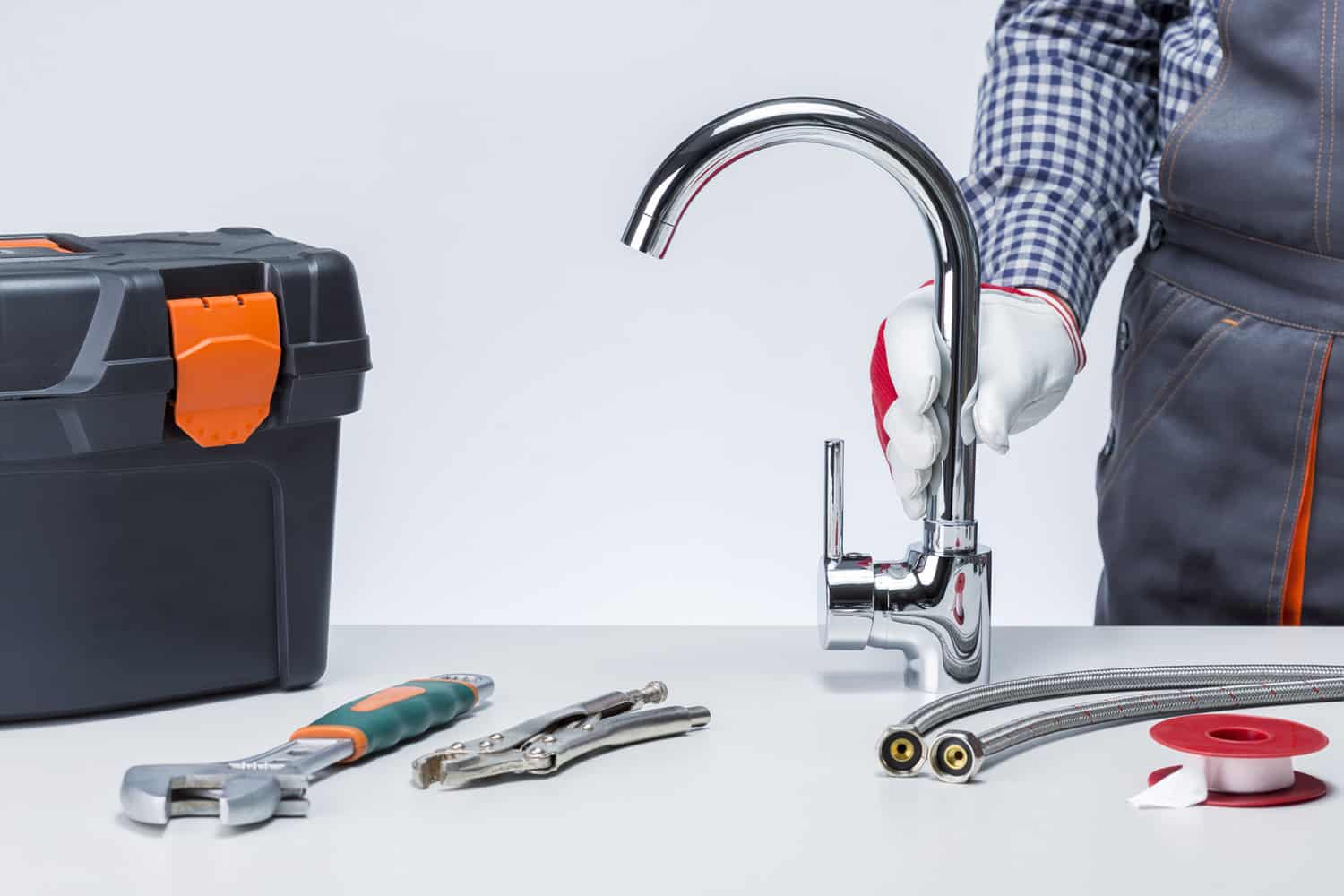
Here is a step-by-step guide for those who might find instruction manuals unclear or intimidating:
- To prevent issues with the water and electricity (for the disposal), turn off the supply.
- Take a photo of the old faucet for later reference.
- Remove the water supply pipes. Get a bucket to catch any remaining water in the pipes.
- Now you can safely detach the faucet from the sink. Ask for assistance if necessary to remove the nuts and bolts that hold the faucet in place.
- Clean the area of the old faucet before installing the new one.
- To install the new faucet, put in the deck plate first. Use caulk or plumber's putty to hold the plate in place.
- Now feed the lines and tighten the hardware underneath the sink. If you have a pull-down faucet, don't forget to attach the weight that pulls the cord back into place.
- Proceed to connect the water supply lines to the new faucet. Check for leaks at this point, and use the plumber's tape where necessary.
- Remove the aerator and turn on the tap slowly to allow water to flow through. The water should flow for a few minutes to clear the lines.
Voila! You have now successfully replaced your kitchen faucet. This procedure can be used for first-time installation, too.
Have a look at this video with a simple demonstration of how to replace your kitchen faucet.
How To Connect A Kitchen Faucet Supply Line
Replacing the supply lines might be necessary due to leaks and improper water supply.
These supply lines or hoses have various lengths, and experts advise changing both in one go. The replacement process is straightforward.
When purchasing the hoses, pay attention to the length you need as well as the connections. You will find that there are 1/2-inch female pipes on both ends. Alternatively, you might get a 1/2-inch female with a 3/8-inch compression connection.
Start by turning off the water supply. Remove the old supply lines and connect the new ones to the underside of the faucet. Then, connect to the main water supply. Ensure the connection is snug but not too tight. Use a wrench and a little pressure.
Finally, turn on the water supply with the taps turned off. Check for leaks and readjust as needed.
Have a look at the following video to see how the steps above are carried out.
As you can see, this is a very easy job with the right tools and supply pipes.
How Often Can You Change Kitchen Faucet Supply Lines
You should change the supply lines to your kitchen faucet every three years. The water supply lines will have gone through the expected wear and tear period.
Generally, this is the rule of thumb. However, it doesn't mean that you should not bother inspecting your supply lines every so often.
Check for leaks, rust, cracks, or bubbling due to water pressure. If you notice this, then call a professional to check the faucet supply lines. Follow the plumber's advice to avoid burst pipes and water flooding your kitchen.
Different Types Of Kitchen Faucets
It is interesting to note that the controls of the kitchen faucet define its type. On the other hand, technology has made it possible to add other types of kitchen faucets to the existing list.
Here are the types of kitchen faucets you'll find in modern kitchens today.
Single-handle Faucet
This single-lever faucet is a traditional type. Regulating a single-lever faucet to get the perfect water temperature might not be easy.
Double-handle Faucet
Another old-fashioned type with two separate levers for hot and cold water supply.
Motion Detection Faucet
This type of kitchen faucet is a futuristic-looking faucet that starts running when it detects hand motion. These faucets can also be pulled-down or voice-controlled.
Check out this Touchless Motionsense kitchen faucet on Amazon
Commercial-style Faucet
These kitchen faucets can have multiple taps and are very flexible. They are commonly found in commercial kitchens due to their design and heavy-duty look.
Pull-out Faucet
This is a more conventional kitchen faucet. The straight body of the faucet gives it its name. It's a more traditional faucet with an elongated water sprout.
Have a look at this pull-out faucet on Amazon
Pull-down Faucet
As the name suggests, this faucet has a hose that pulls down into the sink. It's less messy as the water doesn't splash around but sprays directly into the sink. The pull-down hose feature has made this type of kitchen faucet very popular with homeowners.
Pot-filler Faucet
The distinctive feature of this faucet is an elongated arm that helps fill up large pots easily.
Separate Spray Faucet
This faucet looks like an ordinary pull-out facet with one exception. It has got a separate spray nozzle and a regular faucet. You just need to regulate the tap to reroute the water to use the spray.
In Closing

Manufacturers have many types of kitchen faucets in production. So before ordering or purchasing the design or style you desire, ensure that you check to see if hoses are provided.
If possible, indicate the length of the hose required for your kitchen water supply lines. You can also turn to your local home improvement store and buy hoses if they aren't provided with the kitchen faucet.
Remember to purchase water supply lines or hoses longer than the required length to be safe.
Read some more of our posts here:
How To Extend Dishwasher Drain Hose
Can Pizza Pans Go In The Dishwasher






